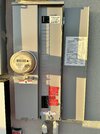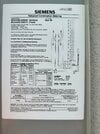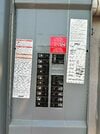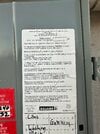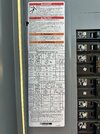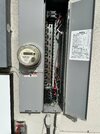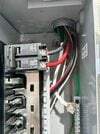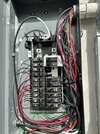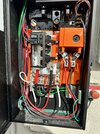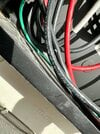Hello,
I had a 11.2KW with a power wall 2+ installed about a year ago. About 4 months in my main old breaker panel fried due to suspected water instrusion.
I had a company come out last minute and they were a little sketchy but did a good job I thought. Sketchy as in not only suggesting to file an insurance claim (I did no regrets), but as soon as they heard it was approved they wanted to push to change out all the aluminum wiring in the house and such for even more money. It seemed odd my problem was fine being fixed with a new main panel, but as soon as my insurance said they’d pay they wanted to do more.
Long story short, I got a new 200 amp main panel with a 125 breaker, and a new sub panel limited to 100amps. When asked about why not 200 amps and a 100 amp sub he said it was due to the aluminum wiring.
Life was good for about 4 months up until recently. I’ve got a wall charger set at 48A I had installed prior with new wiring on its own dedicated circuit. Lately the sub 100A main breaker has been popping when the car decides to charge and there’s additional load like ac. It even popped the other night at 1am with hardly any load on the house (ac off).
I’ve set the wall charger to 24 amps in the mean time, but this seems off. Is there a reason I couldn’t have at least a 125amp breaker on the sub to match the main? I’d like to explore getting my main panel to 200, and what my limit is on my sub, I’m guessing I have to see what the wiring is between the main and sub and go off that.
Is there a max the gateway can handle? Many electricians run when they hear it has Tesla solar/power wall. If I could get educated some perhaps I can be prepared enough to spell out to an electrician exactly what the situation is and what needs to be changed to where they won’t be scared off by “Tesla hardware.”
I had a 11.2KW with a power wall 2+ installed about a year ago. About 4 months in my main old breaker panel fried due to suspected water instrusion.
I had a company come out last minute and they were a little sketchy but did a good job I thought. Sketchy as in not only suggesting to file an insurance claim (I did no regrets), but as soon as they heard it was approved they wanted to push to change out all the aluminum wiring in the house and such for even more money. It seemed odd my problem was fine being fixed with a new main panel, but as soon as my insurance said they’d pay they wanted to do more.
Long story short, I got a new 200 amp main panel with a 125 breaker, and a new sub panel limited to 100amps. When asked about why not 200 amps and a 100 amp sub he said it was due to the aluminum wiring.
Life was good for about 4 months up until recently. I’ve got a wall charger set at 48A I had installed prior with new wiring on its own dedicated circuit. Lately the sub 100A main breaker has been popping when the car decides to charge and there’s additional load like ac. It even popped the other night at 1am with hardly any load on the house (ac off).
I’ve set the wall charger to 24 amps in the mean time, but this seems off. Is there a reason I couldn’t have at least a 125amp breaker on the sub to match the main? I’d like to explore getting my main panel to 200, and what my limit is on my sub, I’m guessing I have to see what the wiring is between the main and sub and go off that.
Is there a max the gateway can handle? Many electricians run when they hear it has Tesla solar/power wall. If I could get educated some perhaps I can be prepared enough to spell out to an electrician exactly what the situation is and what needs to be changed to where they won’t be scared off by “Tesla hardware.”



